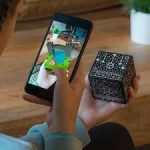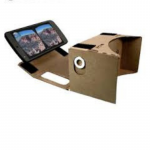Digital Reality
Background/Introduction
- What is Digital Reality?
Digital Reality is any type of experience that uses technology to digitally simulate reality in one way or another across most of the senses. It is broken down into 3 common, overlapping areas:
- AR – Augmented Reality, commonly abbreviated to AR takes your view of the real world and adds digital information and/or data on top of it. A commonly known use of AR is Pokemon Go.
- VR – Virtual Reality, commonly abbreviated to VR, is a technology that simulates a fully immersive virtual or imaginary environment in which a user feels that they are physically present. The real world around you is gone and all you see is the virtual world.
- MR – Mixed Reality lets the user see the real world (like AR) while also seeing believable, virtual objects (like VR). The virtual objects are anchored to a point in real space, making it possible to treat them as “real,” at least from the perspective of the person who can see the MR experience. Here’s an example: You might be looking at an ordinary table, but see an interactive virtual world like a castle sitting on top of it. As you walk around, the virtual landscape holds its position, and when you lean in close, it gets closer in the way a real object would.


Mixed Reality

Virtual Reality
Educational Benefits
Engagement is the key to excellent teaching and truly deep learning. Students of all ages can benefit from Digital Reality lessons. Instead of passively consuming information, students can participate in rich interactive experiences.
- All three modalities: kinesthetic, visual, and auditory are actively engaged.
- Immersive experience means no distractions
- Immediate engagement: useful in today’s world of distraction and/or limited attention spans.
- Exploration and hands on approach aids with learning and retention.
- Helps with understanding complex subjects/theories/concepts
- Suited to all types of learning styles, e.g. visual
- Digital Reality supplements and does not replace existing instructional content. It breathes new life into key topics, with technology that inspires and motivates
Is Digital Reality Safe for Students?
- CommonSense.org reports that there are over 10 Million VR devices currently in use in the United States. Research has been conducted for over 20 years on the use of these devices including one on over hundreds of 3-6 year olds. Research indicates that the virtual reality experience is much more impactful on younger children. They recommend that when using Digital Reality, moderation should prevail. Instead of hours of use, which might apply to other screens, think in terms of minutes. Most VR is meant to be done on the five- to 10-minute scale.
As far as content goes, a good rule is, if you wouldn’t want your students to live with the memory of the event in the real world, then don’t have them do it in VR. Traveling to the moon is fine, but scary experiences will stay with them. - Is there a certain age students should begin using VR?
- CommonSense.org reports that there are over 10 Million VR devices currently in use in the United States. Research has been conducted for over 20 years on the use of these devices including one on over hundreds of 3-6 year olds. Research indicates that the virtual reality experience is much more impactful on younger children. They recommend that when using Digital Reality, moderation should prevail. Instead of hours of use, which might apply to other screens, think in terms of minutes. Most VR is meant to be done on the five- to 10-minute scale.
There is currently established content for all grade levels. Teachers should ensure that the lessons they use are age appropriate.


